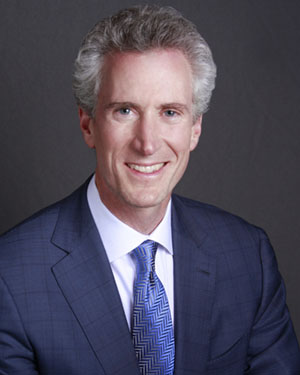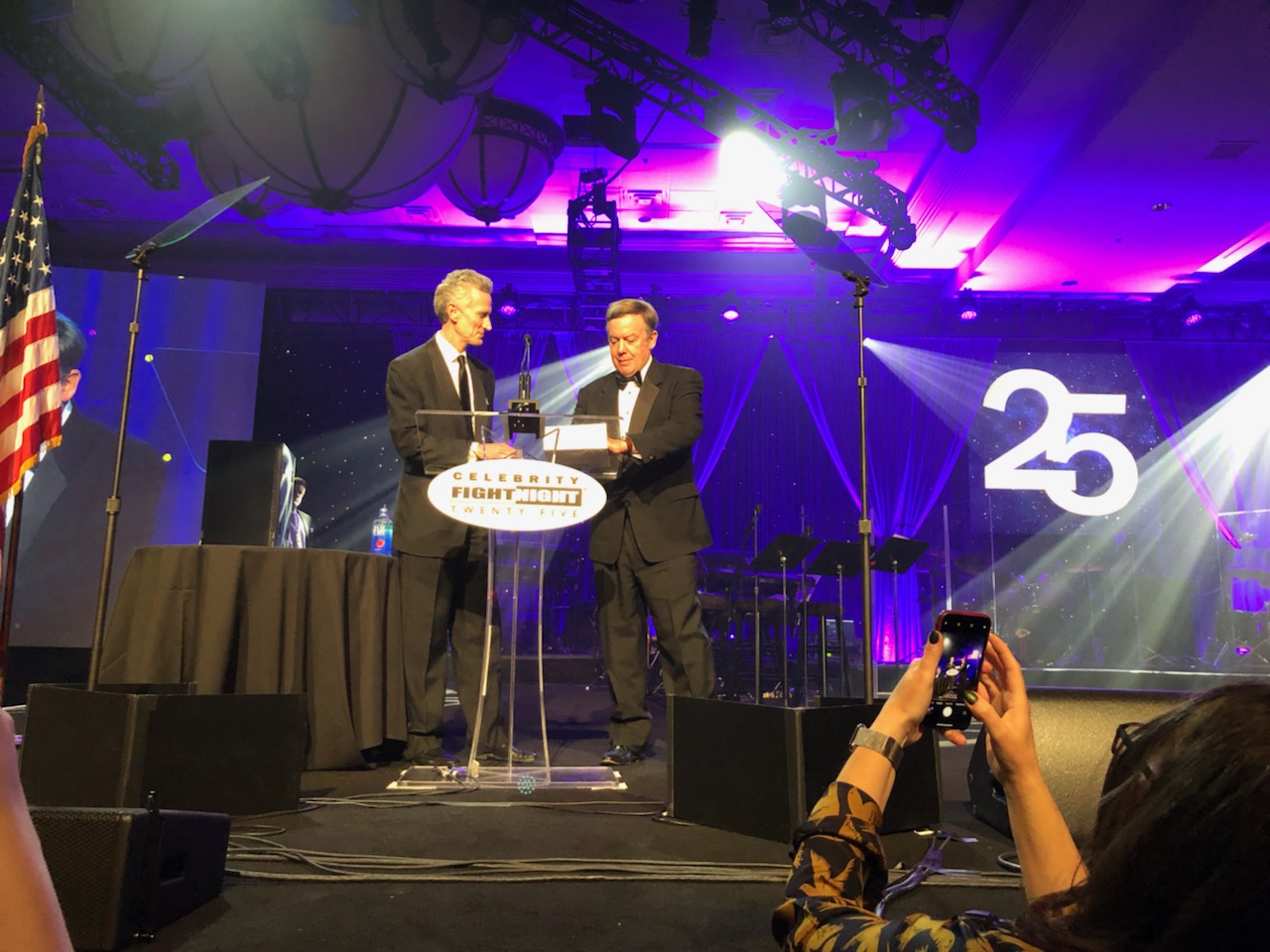Some say space is the final frontier. Michael Lawton, president and CEO of Barrow Neurological Institute, says it’s the human brain.
Over the weekend, the world-renowned institute announced at its annual Celebrity Fight Night event that it is partnering with Arizona State University on a new enterprise to survey and conquer that frontier.
The Barrow-ASU Initiative for Innovation in Neuro-Engineering will bring together leading experts from both institutions to innovate devices, technology, therapies and research to improve brain and spinal cord function and transform the lives of patients with neurological disorders.
“We’d like people to think of Phoenix as this mecca of neuroscience innovation in the same way that people think of Houston as the mecca for space exploration,” Lawton said. “We’re capitalizing on the most innovative university in the country and the largest, busiest neurological institute in the country. It’s a natural marriage for the two leaders within this domain, and we hope this will be an economic engine for this city.”
Neuroengineering is a field with tremendous potential for impacting health and quality-of-life outcomes, said Sethuraman Panchanathan, ASU’s executive vice president and chief research and innovation officer.
“We are delighted to collaborate with BNI on this frontier initiative that will no doubt have a significant impact through innovations, research and training,” Panchanathan said. “This is indeed an incredibly exciting partnership.”
Michael Lawton
ASU Now spoke with Lawton and Ira A. Fulton Schools of Engineering Dean Kyle Squires to learn more about the field of neuroengineering and what this partnership means for the community at large.
Question: What is neuroengineering, in a nutshell?
Squires: I’m oversimplifying somewhat, but it’s looking at the functionality and circuitry of the brain and how it relates to the neural system of the human body and figuring out how we can engineer solutions to physical problems.
Q: What does it look like?
Lawton: For a patient with an amputated leg or a paralyzed arm, neuroengineering means technology to operate prosthetics by thought rather than a joystick or other device. It’s a direct interface between the brain and a machine. It can also be the devices we use as surgeons, or the instruments we use to perform surgery with greater accuracy and precision. These are areas where we can take engineering know-how and apply it to problems we face with patients in the clinical space.
Q: What are the main goals of this new initiative?
Lawton: A few things. First, in the course of a clinician’s work and in the course of an engineer’s work, interesting ideas come to mind, ideas that could change the way we do things, but we don’t capture them. This initiative will create a special place where we can capture these ideas and take them from a lightbulb in someone’s head to an actual prototype and then a product — and sometimes even a business — and change the way we practice medicine and achieve better outcomes for our patients. Second, we think there’s a new breed of doctor that can be created: the physician-engineer, or the surgeon-engineer. I’m an example of that; I was an engineering student in college and I was trained to think a certain way. When I was in medical school, I learned a completely different way of thinking. Our belief is that if we recruit people into the neuroscience space who can think from both an engineering perspective and a clinical perspective, a lot of good will come from it. Thirdly, we would like to get some wins, like developing important new medical devices, forming companies and incubating new technology for patients with neurological disorders.
Squires: Overall, we’re aiming to accelerate convergence. When we speak about convergence, we speak about how, at first glance, there are these two apparently disparate disciplines: engineering and neuroscience. We want to bring them together to solve problems in rehabilitation and brain function. The convergence of ideas in those two fields has to accelerate in order to fundamentally understand brain function and how we can augment it, not only (in the case) of accidents or diseases, but also for healthy patients. We want to come together in creative ways that merge what each of us are good at.
Kyle Squires
Q: What types of disorders could neuroengineering advancements improve?
Lawton: The sky is the limit. It could help with degenerative diseases where you’re losing neurons and critical bodily functions. It could help paralyzed patients walk again. It could help brain aneurysm or stroke patients with devices that open their arteries. Almost anywhere we look in this space, we can think of ways to bring in new devices, imaging modalities and gadgets that make clinicians better, faster and less invasive.
Q: What is most challenging about this field?
Squires: In general, the challenges in this field point to human-machine interactions and how we thoughtfully engineer solutions around those. And this will include “reverse-engineering” the brain to understand all of the complexities of brain function towards then understanding how we might enhance it. That reverse-engineering process can unlock secrets about things like rehabilitation and how to augment brain performance, even in relation to challenges associated with addiction and substance abuse.
Lawton: One of the most exciting challenges is robotics and man-machine interfaces. Robotics is really coming into its own right now. At Barrow, we developed the first robotic system to place screws into the spine to correct deformities or stabilize broken backs. It’s one of — if not the— first game-changing robotics operations in the neurosurgical operating room. Now neurosurgeons are starting to see the robotics applications for other procedures beyond the spine.
Q: Why is this a good time for ASU and Barrow to partner in neuroengineering?
Squires: In short, it’s the complementary strengths of the two institutions and the critical mass that has formed at both BNI and ASU in terms of people and ideas owing to our respective growth and success. This includes our current center on the brain that will provide key leadership and support for this partnership. The challenges that exist in this field are immense, and those cannot be adequately addressed without bringing our complementary strengths together in ways that advance learning, research, translation and ultimately clinical outcomes. We see again and again that the problems that are worth solving lie at the interfaces between disciplines and this partnership will provide the catalyst needed to accelerate progress.
Lawton: What I’ve found at Barrow is that there is tremendous creativity on the team; the student doctors and staff doctors are an enterprising group, and it’s important to capture that creativity. Plus, the sentiment at ASU is really receptive. I’ve enjoyed working with Marco Santello and Kyle Squires and other leaders in the engineering schools because they too want to create this special place. Bioengineering tends to be a small discipline within engineering, but there is intense excitement in neuroengineering because it represents the future. There is no greater mission than to understanding how our brains work and what makes us human — this is our last frontier.
Barrow Neurological Institute President and CEO Michael Lawton (left) and ASU President Michael Crow announced their institutions' new partnership at Celebrity Fight Night in Phoenix on March 23. Photo by Sethuraman Panchanathan/ASU
More Science and technology

ASU professor breeds new tomato variety, the 'Desert Dew'
In an era defined by climate volatility and resource scarcity, researchers are developing crops that can survive — and thrive — under pressure.One such innovation is the newly released tomato variety…

Science meets play: ASU researcher makes developmental science hands-on for families
On a Friday morning at the Edna Vihel Arts Center in Tempe, toddlers dip paint brushes into bright colors, decorating paper fish. Nearby, children chase bubbles and move to music, while…

ASU water polo player defends the goal — and our data
Marie Rudasics is the last line of defense.Six players advance across the pool with a single objective in mind: making sure that yellow hydrogrip ball finds its way into the net. Rudasics, goalkeeper…





